Dress instructions | Chapter 6 Full dress and undress uniforms
Table of contents
- OVERVIEW
- AUTHORIZED PATTERNS (6-1)
- AUTHORIZED FULL DRESS (6-1)
- AUTHORIZED UNDRESS (NO 1C AND 1D ORDERS OF DRESS) (6-2)
- FULL DRESS AND UNDRESS INSIGNIA (6-4)
- PATTERNS AND SPECIFICATIONS (6-4)
- PARADES (6-4)
Alternate format
(Temporarily unavailable)
OVERVIEW
- Full dress and undress are optional uniforms which may be worn on formal occasions. Together with standard mess dress (No. 2 order of dress – see Chapter 5, Annex B), they form a group of related items which reflect the functional heritage of military organizations.
- Except as provided in paragraph 3, these optional uniforms are worn at no expense to the public (see Chapter 2, Section 1, paragraphs 24. to 26.).
- Grants are provided to assist authorized bands and alternative voluntary ceremonial sub-units in maintaining ceremonial uniforms not provided at public expense. See QR&O 210.345, 210.354 and CFAO 210-18. Full dress and some undress uniform items are provided at public expense for RMCC and the Ceremonial Guard, Ottawa.
AUTHORIZED PATTERNS
- Universal full dress patterns are illustrated in Figure 6-1, and undress patterns in Figure 6-13. Rank group differences apply only to full dress.
- Authorized variations for environments, branches and regiments are described below and in this chapter’s annexes.
AUTHORIZED FULL DRESS
- The Royal Military College of Canada. Uniformed as infantry of the line. See Annex B.
- Environmental Full Dress
- Naval Units and Members. Navy blue tunic and trousers (“navy blue” is a tone of black); white facings. Navy full dress is no longer worn.
- Army Units and Members. Army universal-pattern colours are scarlet tunic, blue facings, blue trousers, 4.4 cm scarlet trouser stripe. Unless otherwise noted, the colour “blue” on army traditional uniforms is understood to be the very dark British Royal blue (now commonly called midnight blue in this manual). Authorized variations and restrictions on wear by specific functional groups are noted below.
- Air Force Units and Members. Blue plume, where the headdress allows. Air force light blue tunic, trousers and facings.
- Pipe Bands. Highland Scottish. Pipers and drummers: feather bonnet, air force blue doublet, facings and piping for all. Yellow braid on collar. Shoulder-straps and double-tiered embattled shoulder wings, and cuff and Inverness flap button loops trimmed in yellow braid. RCAF tartan; hose: air force blue, white and red to match the tartan. Blue garter. Black belts for both pipers and drummers. Drummers plaid. Undress glengarry: plain (undiced) border, light blue tourri.
- Others. Air force full dress is no longer worn except by members of pipe and drum bands.
- Armoured Units and Members. The branch facing colour is black (worn only on mess dress as noted in Chapter 5). Regimental-pattern full dress. See Annex A.
- Artillery Units and Members. Busby, scarlet bag. Blue tunic; scarlet facings, cuffs blue. Trouser stripe 4 cm Undress headdress: pillbox. Other variations as follows (see Figures 6-8 and 6-9):
- Royal Canadian Horse Artillery (RCHA). White over scarlet plume. Light-cavalry style jacket (now only worn by RCHA), yellow frogging.
- The Royal Regiment of Canadian Artillery. White side plume.
- The Royal Canadian Artillery Band (a Specific Regular Force Unit) (see Figure 6-10). White side plume. Scarlet facings on collar and cuffs. Collar, cuffs and tunic skirt points especially ornamented with gold lace and tracing braid. No rear pocket flaps; instead, seams ornamentally traced and braided from waistline to bottom of skirt. Gold-braided single-round shoulder cords. Cloth web belt woven horizontally red-yellow-blue-yellow-red. Officer and CWO wear standard officer uniform.
- Pipe Bands. Gordon tartan, unless otherwise authorized. 10th Field Artillery Regiment: Saskatchewan tartan. 49th Field Artillery Regiment: uniformed as Highland Scottish infantry in full dress (i.e. pipers in green doublets and drummers in scarlet tunics, vice artillery blue).
- Infantry Units and Members. Regimental-pattern full dress. See Annex B.
- Bands. Each band is identified with a specific environment, branch or regiment and wears the full dress of that organization, where applicable. See Figures 6-10, 6-11, and 6-12 and Chapter 5, Section 2.
- Other Units and Members. Remaining CAF units and army members of other branches have no authorized full dress. They may be authorized to wear appropriate obsolete full dress as noted in Chapter 2, Section 1, paragraphs 55. and 56.
- Wear Guidelines. The composition of full dress uniforms may be adjusted in accordance with established custom for wear on less formal or more relaxed occasions or duties.
- The most common adjustment is the wear of undress caps (service/forage caps, berets, wedge/field service caps, glengarries, etc) in lieu of full dress headdress.
- Trousers and footwear are the same for full dress, mess dress, and, where authorized for RMCC and the Army Reserve, undress (see paragraph 16.). When undress caps are worn, the difference between these various dress uniforms is essentially the tunic or jacket worn and its accessories.
- Outerwear. Full dress outerwear includes greatcoats and capes in traditional patterns and colours.
- Atholl grey outerwear may only be worn by regiments of foot guards. Rifle regiments may wear green. All other units wishing to wear traditional-pattern outerwear shall wear dark blue. Air force pipers and drummers may wear dark blue capes and air force blue outerwear where applicable.
- Units without traditional-pattern outerwear may wear standard service dress outerwear under inclement conditions. The decision to do so should be based on weather, the need to protect clothing, and uniformity. This outerwear includes:
- topcoat (gabardine);
- raincoat;
- gloves, leather black, or white in accordance with branch/regimental custom; and
- scarf (topcoat (gabardine) and raincoat only)
AUTHORIZED UNDRESS (NO 1C AND 1D ORDERS OF DRESS)
- Authorized Wear
- Undress is authorized for wear only by:
- RMCC officer cadets as an undress uniform in accordance with college dress instructions;
- Navy members as a summer white uniform (optional Orders 1C and 1D – high-collared whites); and
- members of the Army Reserve as optional Orders 1C and 1D, e.g., patrol dress.
- Undress may also be worn without orders, decorations and medals (undress ribbons may be worn in lieu) on less formal occasions when the wearing of orders, decorations and medals would be considered inappropriate.
- Accoutrements may also be worn with No. 1D order of dress.
- Undress is authorized for wear only by:
- Authorized Patterns (see Figure 6-13). Trousers and footwear are the same for full dress, undress (patrol dress) and mess dress. See sub-paragraph 13.b. and Chapter 5, Annex B. Outerwear is the same as for full dress – see paragraph 14. Spurs may be worn with wellingtons by those traditionally classed as mounted personnel when wearing overalls.
- Colour. Except as noted below, undress shall be blue. Tropical white undress (jacket and trousers) is not normally worn in Canada except as an optional navy summer order (Chapter 5, Annex A). White undress jackets may also be worn by Army Reserve units and Air Force pipe bands during hot weather; the universal jacket pattern is the same as that for the navy except for kilted units. Shoulder straps/boards are the same colour as the patrol dress jacket.
- Armoured Regiments. Members of armoured regiments may wear shoulder chain-mail. Officers, warrant officers, and sergeants may wear shoulder belts.
- Rifle Regiments. Members of rifle regiments wear green patrol dress. Officers, warrant officers and sergeants may wear shoulder belts in accordance with regimental policy.
- Kilted Regiments
- Members of Scottish and kilted Irish regiments wear a special pattern of patrol dress: a coatee, an undress doublet, or a cutaway jacket.
- Highland Scottish regiment coatees and undress doublets shall be green, and Lowland regiment undress doublets and cutaway patrol jackets shall be blue, unless otherwise authorized. Customarily, the pattern also varies: coatees for Highland regiments, skirted jackets for others.
- Kilts, hose and some other items are worn in common with full dress (see Annex B).
- Other. In accordance with branch and regimental customs, officers may wear:
- shoulder cords (see paragraph 18.), straps or boards; and
- for army officers, waist sashes (shoulder sashes in kilted units), except where shoulder belts are worn. See Chapter 3, Section 7, paragraphs 28. to 31.
- Headdress. Full dress headdress is not worn with undress jackets. The following undress headdress may be worn in accordance with branch or regimental custom:
- service dress caps/hats, where authorized;
- turbans where authorized;
- forage caps (i.e. service caps styled and coloured for wear as undress headdress with full dress uniforms);
- berets or wedge caps (including those latter styled and coloured as field service caps for undress wear with full dress); and
- glengarry, balmoral or caubeen.
FULL DRESS AND UNDRESS INSIGNIA
- Normal CAF insignia shall be worn on full dress and undress. RMCC officer cadets wear college appointment insignia on their collars in lieu of officer cadet rank insignia.
- Where background cloth might obscure easy recognition, e.g., NCOs black or blue rank chevrons on a green tunic or blue jacket or grey greatcoat the insignia may be highlighted by backing it with scarlet, blue, or green (depending on garment colour) or gold Russia braid outline (foot guards patrol dress). For contrast, officer rank insignia, silver metal or silver embroidery, is worn on gold or gold trimmed shoulder cords/straps/boards; gilt metal or gold embroidered insignia on cloth straps/boards. In Rifle Regiments insignia will be black or bronze metal, as may be authorized.
PATTERNS AND SPECIFICATIONS
- Advice on tailoring specifications may be obtained from Branch Advisers or NDHQ/DSSPM through the chain of command. To minimize expense, units are advised to pool purchases where practical.
PARADES
- Only ankle boots or shoes (oxfords) are authorized for wear on parade, except when wearing overalls. Wellington boots shall be worn with the latter. According to branch or regimental custom, all members may wear Wellington boots with trousers.
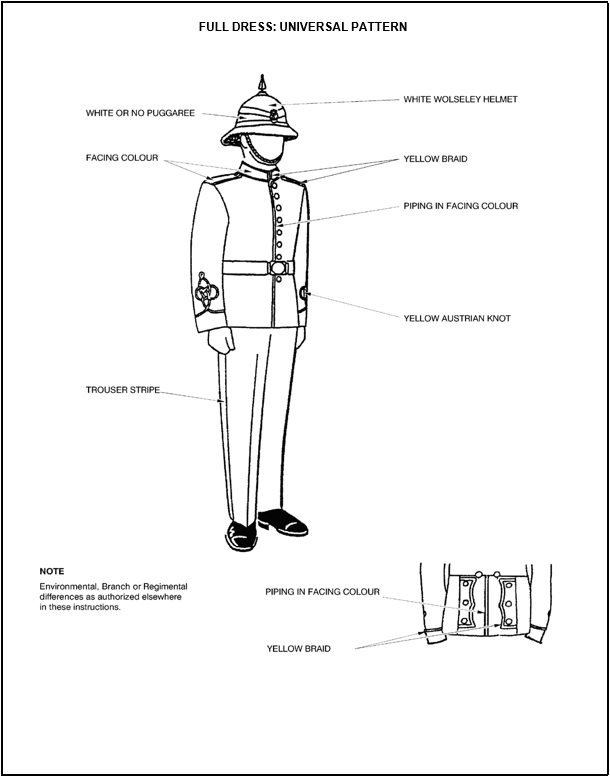
Figure 6-2 Full Dress – Rank-Group Embellishments – Universal Pattern
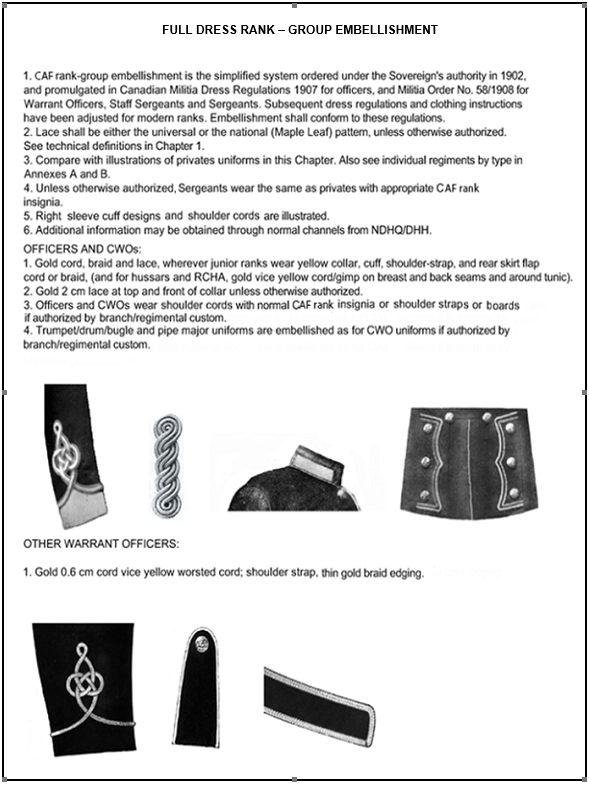
Figure 6-2 Full Dress – Rank-Group Embellishments – Universal Pattern
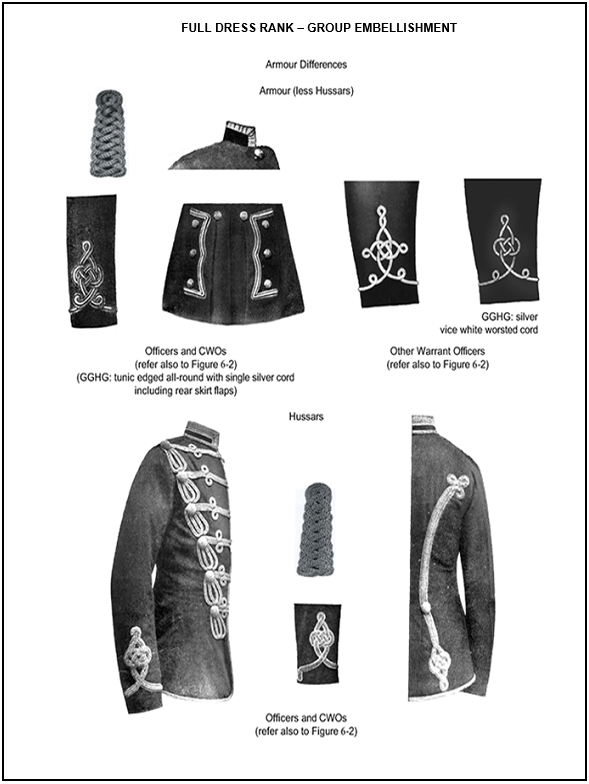
Figure 6-3 Full Dress – Rank-Group Embellishments – Armour
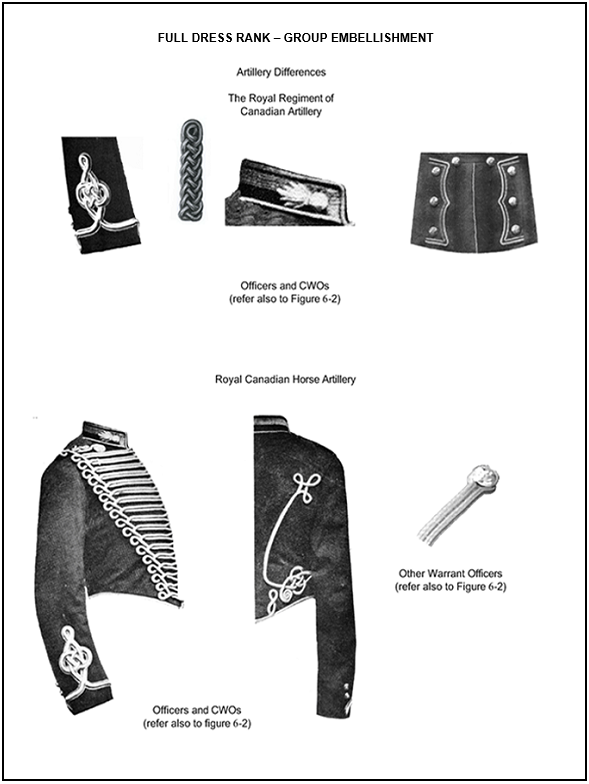
Figure 6-4 Full Dress – Rank-Group Embellishments – Artillery
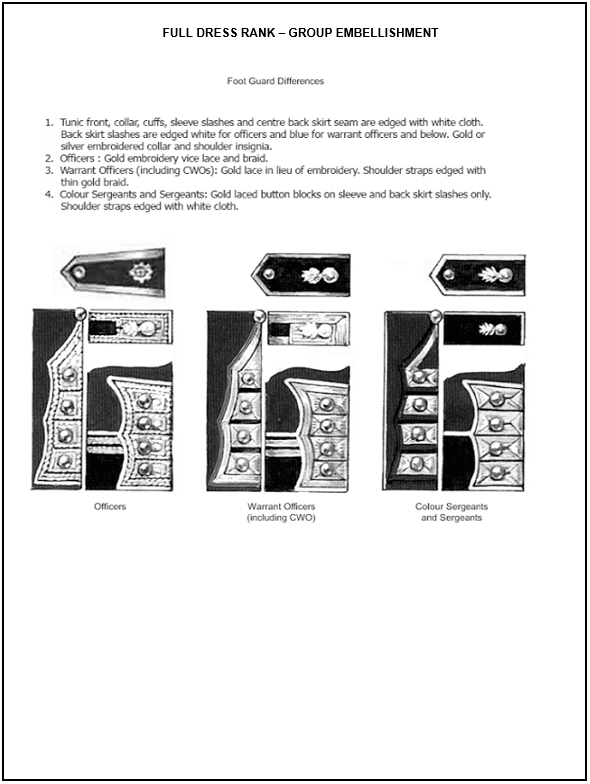
Figure 6-5 Full Dress – Rank-Group Embellishments – Foot Guards
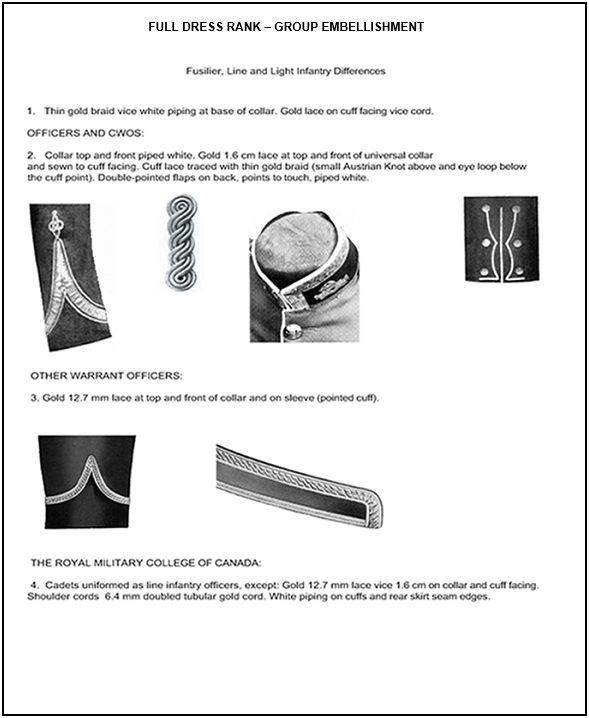
Figure 6-6 Full Dress – Rank-Group Embellishments – Fusilier, Line and Light Infantry
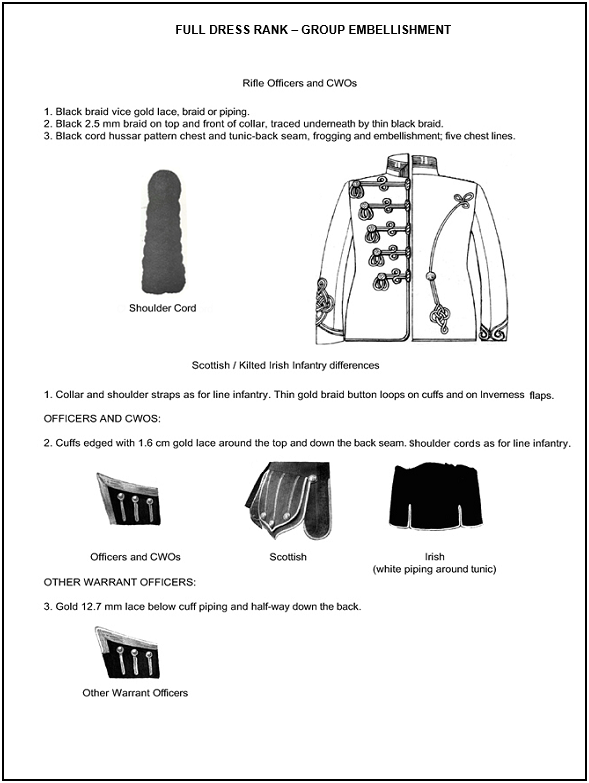
Figure 6-7 Full Dress – Rank Group Embellishments – Rifles, Scottish and Kilted Irish Infantry
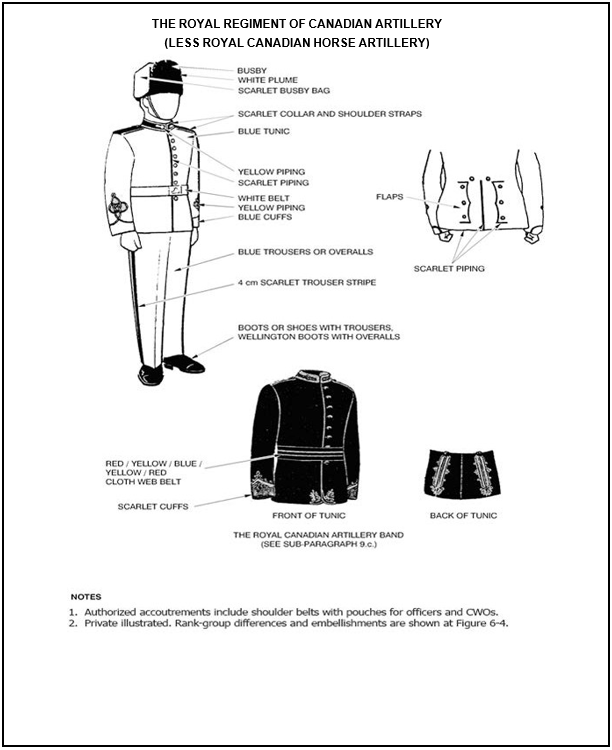
Figure 6-8 Full Dress - Artillery
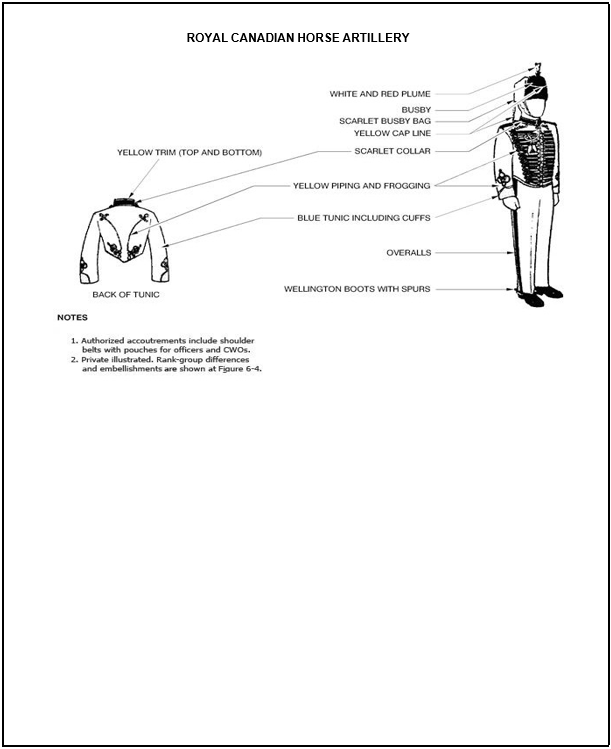
Figure 6-9 Full Dress - Artillery
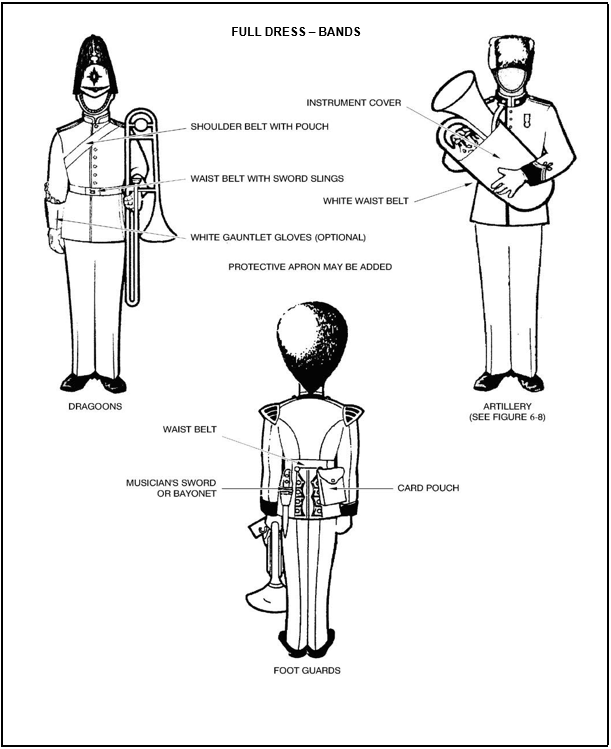
Figure 6-10 Full Dress - Band
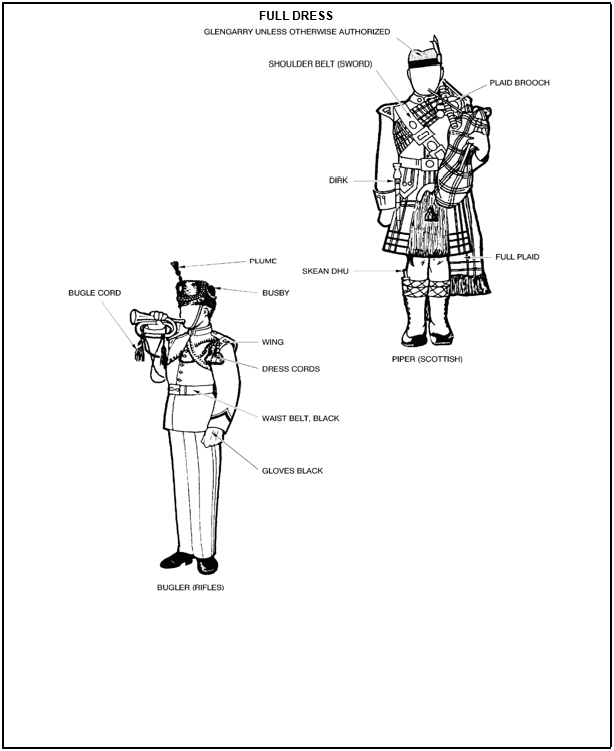
Figure 6-11 Full Dress - Band
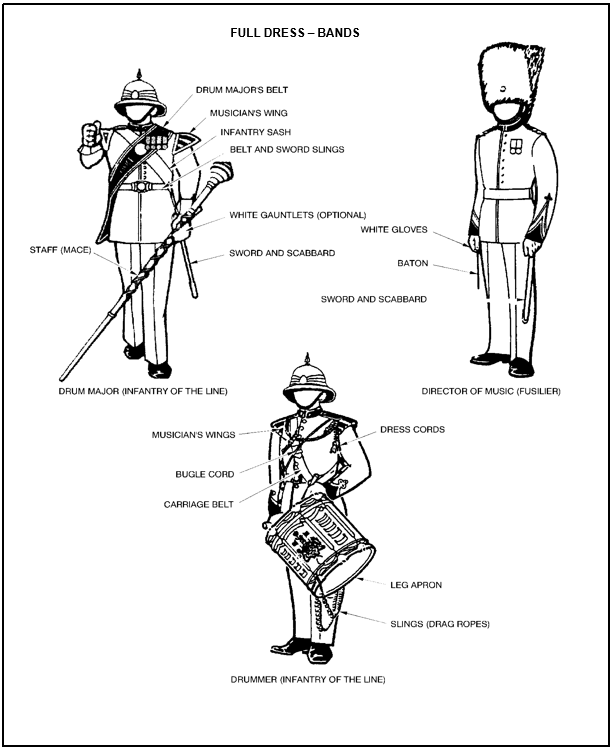
Figure 6-12 Full Dress - Bands
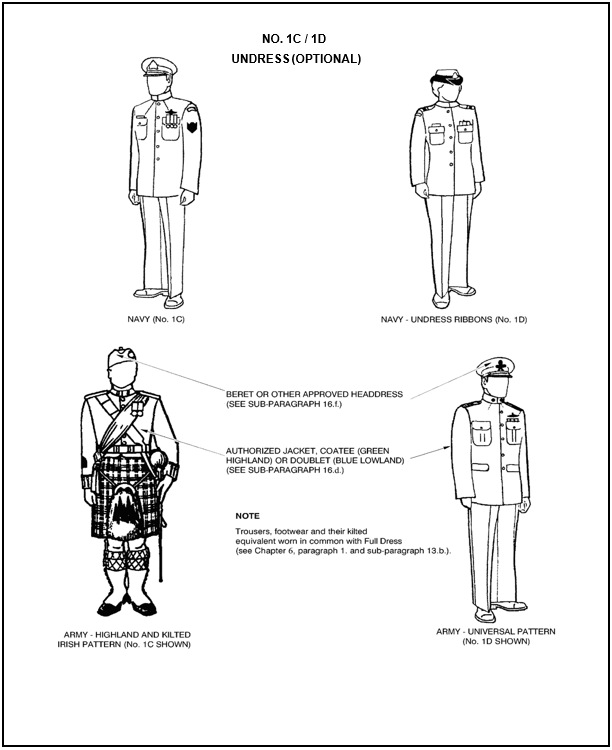
Figure 6-13 Undress Patterns
Page details
- Date modified: